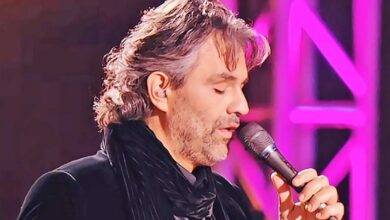This Popular Dance From The 1950s, Can You Remember It Today
In February 1958, a dance craze erupted across American high school gyms and sock hops, perfectly capturing the vibrant spirit of the era and embodying the carefree energy of rock ‘n’ roll’s early days. This dance, known as “The Stroll,” was characterized as a line dance that enjoyed a rapid rise to prominence, particularly in the United States. Its origins can be traced back to African American communities, where it was initially embraced as a form of expression and celebration. However, its meteoric rise to popularity was greatly aided by television, specifically through showcases like Dick Clark’s “American Bandstand,” where teenagers from various backgrounds saw the dance and enthusiastically adopted it in local gatherings.
“The Stroll” was far more than just a fleeting dance trend; it emerged as a cultural phenomenon that mirrored the social dynamics of the 1950s. The dance required two lines of participants facing each other, creating an open aisle down the middle where couples would alternately strut and showcase their moves to the rhythm of the music. This participatory format encouraged both group involvement and individual expression, resonating profoundly with youth who were beginning to assert their identities in a rapidly evolving society. The structured format provided a perfect blend of community and personal flair, allowing each dancer to shine while also being part of a larger collective experience.
Accompanying “The Stroll” was the hit song “The Stroll,” skillfully performed by The Diamonds, a Canadian vocal group known for their smooth harmonies and catchy doo-wop melodies. The song’s infectious rhythm and lively lyrics quickly became synonymous with the dance, propelling it into the cultural zeitgeist. The Diamonds, particularly their lead singer Dave Somerville, played a pivotal role in this dance’s popularity. With his rich baritone voice, Somerville’s melodic crooning guided dancers, making the experience of “The Stroll” even more enjoyable and engaging.
The climactic rise of “The Stroll” allowed it to become a staple at social events during the late 1950s. Its appeal was universal, effectively bridging both racial and social divides during a complex period marked by significant segregation in the United States. The dance’s straightforward nature made it accessible to many, ensuring that teenagers from diverse backgrounds could participate with ease. Simultaneously, the inherent coolness of the dance struck a chord with the youth culture of the time, motivating them to flock to dance floors in their stylish best. In doing so, they tangled their identities with the optimism of post-war America, a nation that was witnessing unprecedented shifts in culture, social norms, and opportunities.
As “The Stroll” swept the nation, it became emblematic of a generation that craved self-expression and a collective sense of enjoyment molded by the newfound freedoms of the 1950s. The dance’s perpetual presence on television and in popular music helped cement its iconic status in American pop culture, making it impossible to separate from the vibrant energy of the era. The dance was marked not only by its exuberance but also by the connection it forged among participants, as dance floors across the nation bore witness to spontaneous bursts of joy and celebration.
The influence of “The Stroll” continued into the subsequent decades, as its legacy extended beyond just a moment in time. Over the years, the dance has resurfaced at community gatherings, nostalgia-themed events, and even family celebrations, illustrating its timeless appeal. The dance’s choreography, which requires little formal instruction, encourages everyone to join in, making it a favored choice for generations of dancers eager to partake in an experience steeped in history.
Interestingly, “The Stroll” also helped point to the shifting landscape of American music in the post-war era. The rise of rock ‘n’ roll and doo-wop, led by artists like The Diamonds, signaled a departure from the more conservative musical styles of earlier generations. This transformation brought a fusion of cultural influences that reflected the diverse backgrounds of artists and audiences alike, leading to broader acceptance and appreciation for different genres and styles of music. This historical crossroads not only shaped the sounds but also the experiences surrounding them, creating a shared space for cultural dialogue.
With “The Stroll” now etched into the annals of American history, it stands as a testament to the power of music and dance as forms of social interaction and cultural identity. Its origins and rise to fame highlight the importance of inclusive spaces where creativity and youth could come together, leading to a profound impact on American cultural life.
In considering the contributions of The Diamonds, particularly the pivotal role of Dave Somerville, we see how individual artists can drive significant cultural shifts. Somerville’s background gave him a unique viewpoint as a vocalist, allowing him to infuse a distinct character into his performances. As part of a band that left an indelible mark on the music of the time, his talent carried “The Stroll” across the airwaves, ensuring that the dance would resonate through the lives of many.
Ultimately, both “The Stroll” and the music that accompanied it demonstrate how interconnected dance and song can be, each enhancing the experience of the other. As participants moved in unison, the joy emanating from the dance floors reminded everyone of the unifying power of music and the shared human experience, making “The Stroll” not just a dance, but a living piece of cultural heritage. The legacy of “The Stroll” endures, a symbol of a time when rock ‘n’ roll provided a soundtrack to youth rebellion and carefree expression, forever immortalizing the spirit of an era.
?si=CbHsPwTM-VodZAIG





